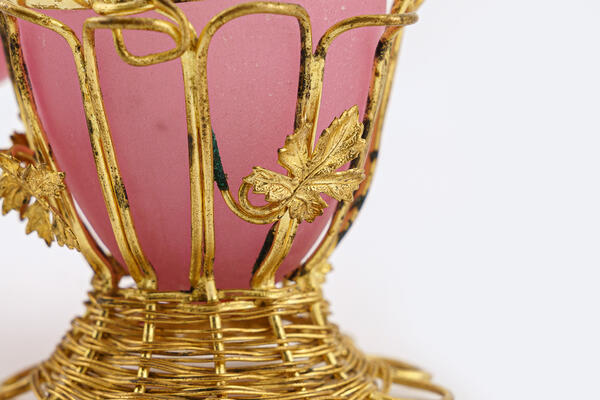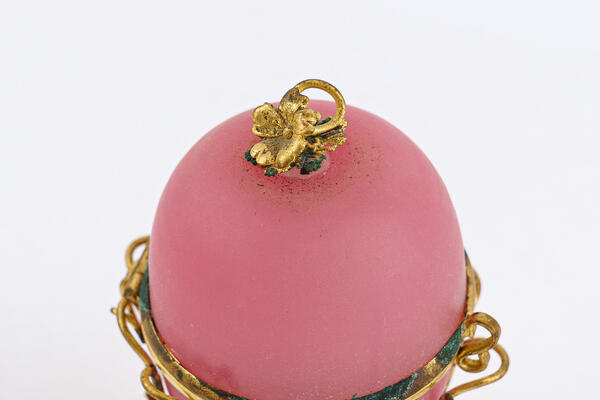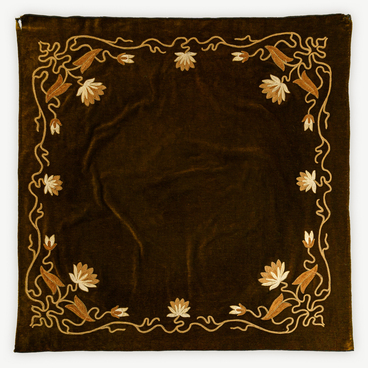The exhibition presents a jewelry box in the form of an Easter egg, placed vertically and consisting of two parts molded from thick pink-colored glass. The glass is frosted on the outside and smooth on the inside. The oblong lower part of the egg is enclosed in a stylized round basket made of thin wire in the form of elongated loops tightly adjoining each other. The base of the basket is braided with fine wire, the upper part is decorated with small parts in the form of vine leaves on curved stalks. Attached to the upper part with three loops is a round metal double frame, which has a latch in the form of the Latin letter S in the front.
The frame is put on the upper edge of the lower part of the box, the upper part of the box — the lid — is inserted into the frame, which flips open backward. There is a hole drilled in the center of the lid at the top, into which a decorative element in the form of an openwork rosette is inserted, adorned with a flower with five petals on a thin stem bent into a loop. All metal parts have a golden coating.
This piece of decorative and applied art became
part of the museum collection in 1999. The box, part of a set of perfume
bottles and boxes, belonged to the Raevsky family. Such boxes have been known
in Russia since the 18th century; they were produced in large quantities at
numerous private enterprises in different cities by blowing out glass mass. The
boxes could be painted. Most often such caskets were used as a package for a
small but valuable gift for a birthday, Christmas or Easter. Earrings, a ring,
a pendant, a small necklace or a bottle of perfume could be placed inside. The
presence of a vine and leaves on the piece suggests it was an Easter gift, as
grapes were a symbol of life and Resurrection in the Christian tradition. Such
a box was also a practical gift, because later it could decorate a lady’s
dressing table, and it could store not only gifts, but also other jewelry.



